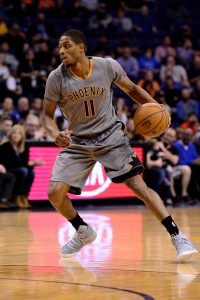The Heat‘s season came to an end on Tuesday night, with a 104-91 loss in Philadelphia resulting in a 4-1 series win for the Sixers. Now that the 2017/18 campaign is officially in the books, Miami faces an important offseason ahead as the front office looks to find a way to turn the Heat from a solid playoff team into a legit contender.
The big summer decisions figure to start with Hassan Whiteside, Miami’s highest-paid player, who is owed a guaranteed $25MM+ salary in 2018/19 and has a $27MM+ player option for 2019/20. After averaging a career-high 32.6 minutes per game for the Heat in 2016/17, Whiteside saw just 25.3 MPG this season, and that number dipped further in the playoffs — he played only 15.4 MPG against the Sixers. As we relayed earlier today, Whiteside wasn’t thrilled with his declining playing time in the postseason.
“At least give me a chance to fight,” Whiteside said. “I can understand if I was playing 30 minutes and I played bad. At least give me a chance. … We played a style of play Coach (Erik Spoelstra) wanted. He wanted to utilize more spacing I guess in the playoffs, so that’s why he did it.”
Whiteside’s discontent with his role and the Heat’s success with Kelly Olynyk and Bam Adebayo at center will create an interesting offseason predicament. Can Miami find a worthwhile trade involving Whiteside, or will the team have to find a way to keep him happy next season? For what it’s worth, at least one report suggests the Heat are expected to explore trade scenarios.
With Whiteside’s contract on the books, the Heat are currently carrying more than $116MM in guaranteed salary for 2018/19, making it virtually impossible to land an impact free agent. Considering Pat Riley has repeatedly made an effort to pursue star players in the past, the team’s inflexibility in terms of cap room presents another fascinating hurdle. To truly transform the roster or land an All-Star caliber player, Miami would almost certainly need to do so via trades, likely moving more than just Whiteside.
Tyler Johnson, whose salary jumps to $19MM+ in 2018/19, and Dion Waiters, who is coming off a season-ending ankle injury, would be trade candidates, though neither player will have significant value. In order to maximize their potential return, the Heat will have to be willing to discuss one or more their more valuable pieces, such as Goran Dragic, Justise Winslow, Josh Richardson, Olynyk, and Adebayo.
It also doesn’t help matters that Miami’s best shooter, Wayne Ellington, is an unrestricted free agent. He’s one of a small handful of Heat players eligible for free agency — another is Dwyane Wade, who would probably have to accept another minimum salary deal if he decides he wants to return for another season.
In a piece calling for major offseason roster changes, Barry Jackson of The Miami Herald suggests that no Heat player should be untouchable this summer, and notes that Riley is “less likely than ever” to embark on an all-out rebuild. But we want to know what you think.
What’s the best path to contention for the Heat? Is there a realistic trade out there that could raise the club’s ceiling? What should Miami do with Whiteside? Which players on the roster are keepers?
Jump into the comment section below to share your thoughts on the offseason outlook for the Heat!

